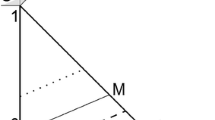Abstract
We present a finite element implementation of a micromechanically motivated model for poly-crystalline shape memory alloys, based on energy minimization principles. The implementation allows simulation of anisotropic material behavior as well as the pseudo-elastic and pseudo-plastic material response of whole samples. The evolving phase distribution over the entire specimen is calculated. The finite element model predicts the material properties for a relatively small number of grains. For different points of interest in the specimen the model can be consistently evaluated with a significantly higher number of grains in a post-processing step, which allows to predict the re-orientation of martensite at different loads. The influence of pre-texture on the material’s properties, due to some previous treatment like rolling, is discussed.
Similar content being viewed by others
References
Ball JM, James RD (1987) Fine phase mixtures as minimizers of energy. Arch Ration Mech Anal 100: 13–52
Bouvet C, Calloch S, Lexcellent C (1987) A phenomenological model for pseudoelasticity of shape memory alloys under multiaxial proportional and nonproportional loadings. Eur J Mech A Solids 23: 37–61
Govindjee S, Miehe C (2001) A multi-variant martensitic phase transformation model: formulation and numerical implementation. Comput Methods Appl Mech Eng 191: 215–238
Govindjee S, Mielke A, Hall GJ (2003) The free energy of mixing for n-variant martensitic phase transformations using quasi-convex analysis. J Mech Phys Solids 51: 763+
Govindjee S, Hackl K, Heinen R (2003) An upper bound to the free energy of mixing by twin-compatible lamination for n-variant martensitic phase transformations. Continuum Mech Thermodyn 18: 443–453
Hackl K, Fischer FD (2008) On the relation between the principle of maximum dissipation and inelastic evolution given by dissipation potentials. Proc R Soc A 464: 117–132
Hackl K, Heinen R (2008) A micromechanical model for pretextured polycrystalline shape-memory alloys including elastic anisotropy. Continuum Mech Thermodyn 19: 499
Heinen R, Hackl K (2007) On the calculation of energy- minimizing phase fractions in shape memory alloys. Comput Methods Appl Mech Eng 196: 2401–2412
Helm D, Haupt P (2003) Shape memory behaviour: modelling within continuum thermomechanics. Int J Solids Struct 40: 827–849
Kohn RV (1991) The relaxation of a double-well energy. Continuum Mech Thermodyn 3: 193–236
Lexcellent C, Vivet A et al (2001) Experimental and numerical determination of the initial surface of phase transformation under biaxial loading in some polycrystalline shape-memory alloys. J Mech Phys Solids 50: 2717–2735
Mehrabadi MM, Cowin SC (1987) Eigentensors of linear anisotropic elastic materials. Q J Mech Appl Math 43: 15–41
Mielke A (2003) Energetic formulation of multiplicative elasto-plasticity using dissipation distances. Cont Mech Thermodyn 15: 351–382
Mielke A, Theil F, Levitas VI (2002) A variational formulation of rate-independent phase transformations using an extremum principle. Arch Ration Mech Anal 162(2): 137–177
Ortiz M, Repetto EA (1999) Nonconvex energy minimization and dislocation structures in ductile single crystals. J Mech Phys Solids 47: 397–462
Pan H, Thamburaja P, Chau FS (2007) Multi-axial behavior of shape-memory alloys undergoing martensitic reorientation and detwinning. Int J Plasticity 23: 711–732
Schaefer A, Wagner MF-X (2009) Strain mapping at propagating interfaces in pseudoelastic NiTi. EDP Sciences ESOMAT 2009, art. 06031
Sedlák P et al (2005) Elastic constants of bcc austenite and 2H orthorhombic martensite in CuAlNi shape memory alloy. Acta Mater 53: 3643–3661
Stein E, Sagar G (2008) Theory and finite element computation of cyclic martensitic phase transformation at finite strain. Int J Numer Methods Eng 74: 1–31
Stupkiewicz S, Petryk H (2002) Modelling of laminated micro-structures in stress-induced martensitic transformation. J Mech Phys Solids 50: 2303–2331
Taylor RL. FEAP—a Finite Element Analysis Program. http://www.ce.berkeley.edu/~rlt/
Thamburaja P (1987) Constitutive equations for martensitic reorientation and detwinning in shape-memory alloys. J Mech Phys Solids 53: 825–856
Truskinovsky L (1994) About the normal growth approximation in the dynamical theory of phase-transitions. Continuum Mech Thermodyn 6: 185–208
Author information
Authors and Affiliations
Corresponding author
Rights and permissions
About this article
Cite this article
Junker, P., Hackl, K. Finite element simulations of poly-crystalline shape memory alloys based on a micromechanical model. Comput Mech 47, 505–517 (2011). https://doi.org/10.1007/s00466-010-0555-4
Received:
Accepted:
Published:
Issue Date:
DOI: https://doi.org/10.1007/s00466-010-0555-4




